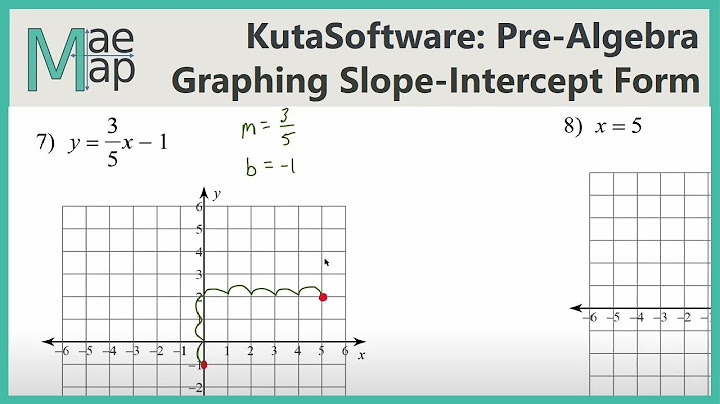PurplemathThere are many opportunities for mistakes with absolute-value inequalities, so let's cover this topic slowly and look at some helpful pictures along the way. When we're done, I hope you will have a good picture in your head of what is going on, so you won't make some of the more common errors. Once you catch on to how these inequalities work, this stuff really isn't so bad. Content Continues Below MathHelp.com (Note: This lesson covers linear absolute-value inequalities.) Let's first return to the original definition of absolute value: "| x | is the distance of x from zero." For instance, both −2 and +2 are two units from zero, as you can see in the image below:  This means that their absolute values will both be 2; that is, we have: | −2 | = | +2 | = 2 With this definition and picture in mind, let's look at some absolute value inequalities.
This is an inequality. Where the solution to an absolute-value equation is points (like in the graphic above), the solution to an absolute-value inequality (or "inequation") is going to be intervals. In this inequality, they're asking me to find all the x-values that are less than three units away from zero in either direction, so the solution is going to be the set of all the points that are less than three units away from zero. First, I'll draw a number line:  Looking at the inequality, I see that the number 1 will work as a solution, as will −1, because each of these is less than three units from zero. The number 2 will work, as will −2. But 4 will not work, and neither will −4, because they are too far away from zero. Even 3 and −3 won't work (though they're right on the edge), because this is a "less than" (but not equal to) inequality. However, the number 2.99 will work, as will −2.99. In other words, all the points between −3 and 3, but not actually including −3 or 3, will work as solutions to this inequality. So, graphically, the solution looks like this:  (The open circles at the ends of the blue line indicate "up to, but not including, these points." Your book might use parentheses instead of circles.) Translating this picture into algebraic symbols, I get the following solution: −3 < x < 3 This pattern for "less than" absolute-value inequalities always holds: Given an inequality in the form | x | < a, the solution will always be of the form −a < x < a. By the way, the correct conjunction for "less than" absolute-value inequalities is "and". Why? Because the variable is contained within one interval. In the example above, x was both "more than −3" and also "less than +3". The x is in the interval that satisfied both inequalities at the same time. So "and" is the correct conjuction. Even when the exercises get more complicated, the above pattern will still hold.
Since this is a "less than" absolute-value inequality, my first step is to clear the absolute value according to the "less than" pattern. Then I'll solve the linear inequality. | 2x + 3 | < 6 −6 < 2x + 3 < 6 This is the pattern for "less than". Continuing, I'll subtract 3 from all three "sides" of the inequality: −6 − 3 < 2x + 3 − 3 < 6 − 3 −9 < 2x < 3 The solution to the original absolute-value inequality, | 2x + 3 | < 6, is this interval: The other case for absolute value inequalities is the "greater than" case.
First, I'll start with a number line.  The solution to the given inequality will be the set of all points that are more than two units away from zero. For instance, −3 will work, as will +3; −4 will work, as will +4. But −1 will not work, and neither will +1, because they're too close to zero. Even −2 will not work, and neither will +2 (although they're right on the edge), because this is a "greater than" (but not equal to) inequality. However, +2.01 will work, as will −2.01. In other words, the solution will be two separate sections: one section being all the points more than two units from zero off to the left, and the other section being all the points more than two units from zero off to the right. The solution, in graphical terms, looks like this:  Translating this graphical solution into symbols, I get: x < −2 or x > 2 Take careful note! The solution to this "greater than" absolute-value inequality is TWO regular inequalities, not one. DO NOT try to write this as one inequality. If you try to write this solution as "−2 > x > 2", your answer be counted wrong. Why? Because, if you take out the x in the middle, you'll see that you would be saying "−2 > 2", which certainly is not true. Take the extra half a second, and write the solution correctly. This pattern for "greater than" absolute-value inequalities always holds: Given the inequality | x | > a, the solution always starts by splitting the inequality into two pieces: x < −a or x > a. And, by the way, the correct conjunction is "or", not "and". Why? Because the variable cannot be in both of the solution intervals and the same time. In the example above, x cannot be both "less than −2" and also "greater than +2" at the same time. Therefore, we use "or" for these types of solutions.  Even when the inequalities are more complicated, the above pattern still holds.
The first thing I need to do is clear the absolute-value bars by splitting the inequality into two pieces. Then I'll solve the two regular inequalities. | 2x − 3 | > 5 2x − 3 < −5 or 2x − 3 > 5 This is the pattern for "greater than" absolute-value inequalites. 2x < −2 or 2x > 8 x < −1 or x > 4 This PAIR of inequalities is the solution to the original absolute-value inequality. x < −1 or x > 4 How to solve absolute-value inequalities
There is another situation you might encounter: You'll be given a pair of inequalities, and you'll be asked to find the corresponding absolute-value inequality. This process can feel a bit weird, so I'll give a couple examples of how it works.
To figure this out, I first look at the endpoints. Minus two and plus four are six units apart. Half of six is three. This tells me that I want to adjust this inequality so that it relates to −3 and +3, instead of to −2 and +4. To accomplish this, I see that I can adjust the values at the left- and right-hand ends by subtracting 1 from all three "sides" of the inequality: −2 < x < 4 −2 − 1 < x − 1 < 4 − 1 −3 < x − 1 < 3 Since the last line above is in the "less than" format for absolute-value inequalities, my solution inequality will be of the form "absolute value of (something) is less than 3". The (something) is the piece in the middle, where the variable is. So I can convert my last line above to the following: | x − 1 | < 3
What they've given me is in two pieces, joined with an "or", so I know that this will be a "greater than" absolute-value inequality. To start, I look at the endpoints. Nineteen and 24 are five units apart. Half of five is 2.5. So I want to adjust the inequality so it relates to −2.5 and +2.5, instead of relating to +19 and +24. Since 19 − (−2.5) = 21.5 and 24 − 2.5 = 21.5, I see that I need to subtract 21.5 all around: x ≤ 19 or x ≥ 24 x − 21.5 ≤ 19 − 21.5 or x − 21.5 ≥ 24 − 21.5 x − 21.5 ≤ −2.5 or x − 21.5 ≥ 2.5 Since the last line above is the "greater than" format, the absolute-value inequality will be of the form "absolute value of (something) is greater than or equal to 2.5". The (something) will be the part with the variable in it. So I can convert my last line above to: | x − 21.5 | ≥ 2.5 Warning: There is one "trick" type of question for this kind of problem, where they'll try to trip you up on homework or tests. They'll ask you to solve something like "| x + 2 | < −1". But can an absolute value ever be negative, let alone be less than a negative? No! So there is no solution to this inequality; it doesn't even make sense. Don't waste a lot of time trying to "solve" this; just write down "no solution". Similarly, if you're given something like "| x − 2 | > −3", the first thing to note is that all absolute values are zero or positive. In particular, they're never negative. They're asking you for the x-values that will make the absolute-value expression greater than a negative number. Since the absolute value will always be greater than any negative number, the solution must be "all x" or "all real numbers". You can use the Mathway widget below to practice solving absolute-value inequalities. Try the entered exercise, or type in your own exercise. Then click the button and select "Solve for x" to compare your answer to Mathway's. (Click "Tap to view steps" to be taken directly to the Mathway site for a paid upgrade.) URL: https://www.purplemath.com/modules/absineq.htm |

Related Posts
Advertising
LATEST NEWS
Advertising
Populer
Advertising
About

Copyright © 2024 pauex Inc.













